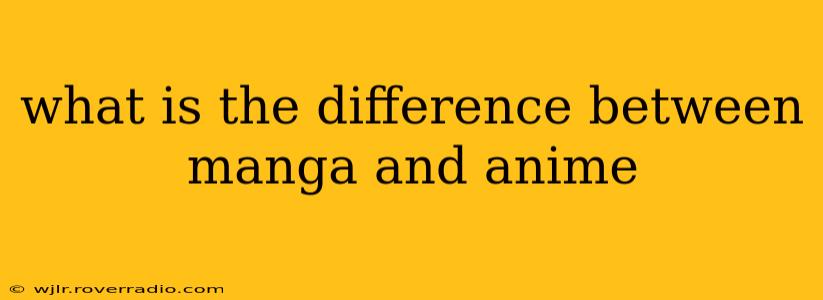Manga vs. Anime: Understanding the Key Differences
For those new to Japanese pop culture, the terms "manga" and "anime" can be confusing. While both are integral parts of Japan's vibrant entertainment landscape, they represent distinct mediums with unique characteristics. This article will delve into the core differences between manga and anime, answering common questions along the way.
What is Manga?
Manga is the Japanese word for comics or graphic novels. It's a visual storytelling medium characterized by its unique art style, often featuring expressive characters, dynamic action sequences, and a wide range of genres, from action-adventure and fantasy to romance and slice-of-life. Manga is typically read from right to left, mirroring the Japanese writing system. The art style is diverse, ranging from highly detailed and realistic to simpler, more expressive styles. Many manga series run for hundreds of chapters, often serialized in magazines before being collected into bound volumes.
What is Anime?
Anime, short for "animation," refers to Japanese animation. It uses a distinctive style characterized by vibrant colors, dynamic movement, and often expressive character designs. Anime encompasses a vast array of genres, mirroring the breadth of manga, and can range from family-friendly shows to mature and complex narratives. Anime is often produced as television series, movies, or OVAs (Original Video Animations), released directly to home video.
What are the Key Differences Between Manga and Anime?
The most fundamental difference lies in the medium itself:
- Manga is a static visual medium, utilizing sequential art to tell a story. Readers actively participate in the storytelling process, interpreting the visuals and dialogue to build the narrative in their minds.
- Anime is a moving visual medium, bringing the story to life through animation, voice acting, music, and sound effects. The narrative unfolds dynamically before the viewer, with less reliance on individual interpretation.
This core difference leads to other key distinctions:
- Art Style: While both share stylistic similarities, manga art is generally more static, focusing on detailed character expressions and dynamic panel layouts. Anime art focuses on fluidity and movement, often employing more stylized character designs and backgrounds.
- Storytelling: Manga often relies on detailed visual storytelling and internal monologues to convey character emotions and plot points. Anime can utilize a wider range of narrative techniques, including voice acting, music, and dynamic camera angles to enhance the emotional impact.
- Content: While many anime adaptations are based on manga, the two mediums can diverge significantly. Anime might condense, expand, or alter plot points and characters to better suit the animated format. Conversely, a manga adaptation might add or omit storylines compared to its source material.
- Production: Manga is created by a mangaka (manga artist) and potentially assistants, while anime production involves significantly larger teams, including animators, directors, voice actors, composers, and many other specialists.
How are Manga and Anime Related?
Many anime series are adaptations of existing manga. The manga often serves as the original source material, providing a detailed story and character designs that the anime adapts for the screen. However, there are many anime series that are original and not based on manga. Similarly, there are many manga series that haven't been adapted into anime.
What is the difference between a Manga and a Graphic Novel?
While the terms are often used interchangeably, a key distinction lies in origin. "Manga" specifically refers to comics originating from Japan. "Graphic novel" is a broader term encompassing longer, more complex narrative comics from any country. Many manga series are considered graphic novels due to their length and complexity, but not all graphic novels are manga.
In conclusion, manga and anime are distinct but intertwined art forms. While manga provides a static visual narrative, anime brings the story to life through animation. Understanding their differences allows for a deeper appreciation of both mediums and their unique contributions to the world of entertainment.
